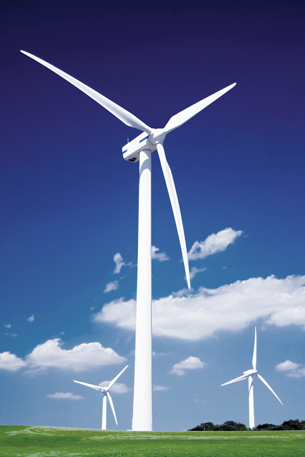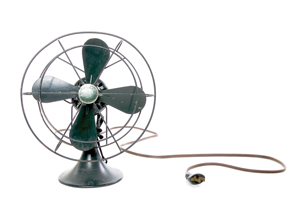Module 4
1. Module 4
1.21. Page 6
Module 4—Magnetic and Electric Fields in Nature and Technology
 Reflect and Connect
Reflect and Connect

© sculpies/shutterstock
Is a motor a generator? Is a generator a motor? They are, in fact, the same thing. Consider the electric motor fan and the wind turbine. In the fan motor, the movement of electrons through a conductor located in a non-parallel magnetic field generates a magnetic force causing the rotational motion of the fan. In a wind turbine, as shown in the photograph on the right, an external force (wind) is used to push a conductor through a magnetic field, inducing a current flow in the conductor. Connecting the motor and generator with a conducting wire (recall the transmission lines from Module 3) allows the energy captured at the wind turbine to be delivered and used by the electric fan.
Since the motor and generator are essentially the same thing, both depend on similar components:
- an external magnetic field
- a conductor, which is driven by an external force in a generator or a magnetic force in a motor
- a commutator for controlling the current direction in the conductor, relative to the external magnetic field

© Michael Drager/shutterstock
 Module 4: Lesson 3 Assignment
Module 4: Lesson 3 Assignment
Remember to submit the Module 4: Lesson 3 Assignment to your teacher.